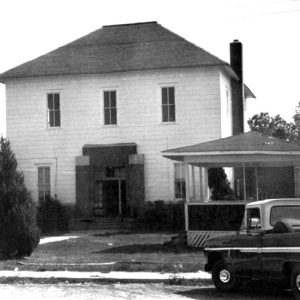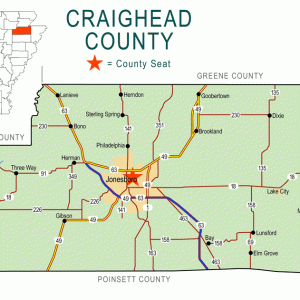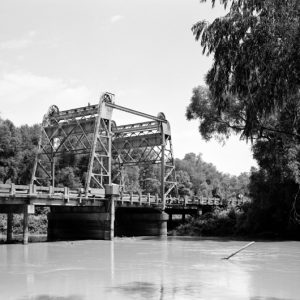calsfoundation@cals.org
Lake City (Craighead County)
County Seat
| Latitude and Longitude: | 35º48’58″N 090º26’03″W |
| Elevation: | 230 feet |
| Area: | 3.15 square miles (2020 Census) |
| Population: | 2,326 (2020 Census) |
| Incorporation Date: | February 27, 1898 |
Historical Population as per the U.S. Census:
|
1810 |
1820 |
1830 |
1840 |
1850 |
1860 |
1870 |
1880 |
1890 |
1900 |
|
– |
– |
– |
– |
– |
– |
– |
– |
– |
434 |
|
1910 |
1920 |
1930 |
1940 |
1950 |
1960 |
1970 |
1980 |
1990 |
2000 |
|
448 |
635 |
760 |
786 |
783 |
850 |
948 |
1,842 |
1,833 |
1,956 |
|
2010 |
2020 |
|
|
|
|
|
|
|
|
|
2,082 |
2,326 |
|
|
|
|
|
|
|
|
Lake City is located in eastern Craighead County near the St. Francis River, in the northeast corner of the state. Along with Jonesboro (Craighead County) in the western side of the county, Lake City acts as one of two county seats, serving the Eastern District of Craighead County.
Louisiana Purchase through Early Statehood
Nineteenth-century records indicate that a settlement was established at the approximate location of Lake City in the late 1830s. Situated on the St. Francis River at the site of a former Native American camp, it was originally called “Old Town.” A trader and trapper named Jesse Morgan was probably the first white man to settle at the current location of the town. The 1848 field notes of James Danley, a surveyor for the government, show Old Town as a small community in the process of steadily being settled.
The federal Swamp Land Grant Act, which became law in 1850 and ceded the swampy land in what is today the Eastern District of Craighead County to the State of Arkansas, resulted in land speculators buying large tracts and re-selling small parcels to settlers. Many of the newcomers earned their living by hunting and trapping along with working their small family farms. The growing population prompted the need for accessible transportation, and Old Town, with its location on the St. Francis River, became a relatively important steamboat landing. With increased trade and a growing population just prior to the Civil War, several merchants arrived to establish a thriving trading post at Old Town.
Civil War through the Gilded Age
By 1878, the town had grown to about 1,350. Because there was already a post office at another place called Old Town in Arkansas, the application for a local post office was entered in the name “Sunk Lands.” This was a reference to the “sunken lands” of the area, created by the New Madrid Earthquakes of 1811–1812. On November 18, 1878, the Sunk Lands post office opened for business to serve the community, which still remained known as Old Town.
The 1880 Census shows that the town had attracted not only several more merchants but also a doctor, a schoolteacher, and a saloonkeeper. By the following year, there was growing sentiment among the increasing population to change the name of their village from Old Town to something more substantial. As there was a seven-mile-long, mile-wide sedentary body of water on the St. Francis River at Old Town that resembled a lake, the community was renamed Lake City in 1886. However, the early 1900s saw a spate of levee construction and dredging of the river, which altered its flow. Crops were planted in the previously submerged fertile soil, transforming it to farmland, and the lake essentially vanished, though the name of the town lived on.
The New Madrid earthquakes also created huge bogs that remained filled with water at all times, other than during extremely dry spells. These muddy sloughs made travel extremely difficult for residents of Lake City, particularly when they had to transact business at the county seat in Jonesboro. For most of the 1800s, the only road connecting Lake City with Jonesboro was a circuitous one, running from Lake City to Bay (Craighead County) to the Ridge Road north of Jonesboro. In the 1880s, citizens of Lake City embarked on a campaign to make their town the second county seat so that they could take care of official business without the arduous trip.
In 1883, the Arkansas legislature passed an act officially creating the Eastern District of Craighead County, establishing a second county seat at Lake City. A subsequent agreement directed that a chief deputy sheriff and chief deputy clerk would be elected by residents of the district and stationed at Lake City. This arrangement, the only one of its kind in Arkansas, still remains in effect.
The muddy sloughs continued to make travel difficult between Lake City and Jonesboro until 1893, when a plan to begin clearing and grading a road between the two towns was approved. The Jonesboro–Lake City road was completed the following year. Still, people living farther east of Lake City had no convenient access to the town, being forced to take a ferry to cross the St. Francis River. In 1898, a one-lane wooden bridge, more than a mile long, was constructed across the St. Francis and made travel much easier. It was replaced in 1912 and again in 1934 with a concrete bridge, which was in general use until the current modern bridge became the preferred crossing in the 1990s.
A tremendous step forward for the town occurred in 1897 when a rail link from Nettleton (Craighead County) was completed, giving residents access to the Jonesboro, Lake City and Eastern Railroad (JLC&E) and opening access to the huge tracts of virgin forest around Lake City. Logging, sawmills, a handle mill, and a barrel stave mill provided steady jobs for local residents and new arrivals. The town’s population grew, with more than 100 houses being built in one five-month period.
Easier access to the town and the nearby St. Francis River also enhanced its status as a fishing and leisure destination. Boat rental and commercial fishing became thriving businesses, and special excursion trains were operated by the JLC&E, bringing leisure travelers from Jonesboro to Lake City to enjoy dancing and other entertainment.
Early Twentieth Century
By the turn of the century, the town included a downtown business district populated with general stores, livery stables, blacksmith shops, barbers, a drugstore, and a bank. Among the residents was up-and-coming attorney Thaddeus Caraway, later a U.S. senator.
By 1904, however, the town suffered a setback when a fire destroyed almost all of the downtown businesses and half of the town’s homes. However, the Bank of Lake City, the courthouse, and rail depot remained standing. The town quickly rebuilt, due in large part to an offer by the JLC&E that it would ship building goods on its trains for half price if they were being used to reconstruct the town. Most of the new structures were therefore built closer to the railroad and farther from the river, which had previously been the area’s principal mode of transportation.
By the time of the 1910 Census, the population of the town and surrounding area had grown to almost 2,000. Another fire in 1914 destroyed several downtown businesses. The following year, Lake City’s economic fortunes again turned upward as a new barrel stave mill was opened, with the company constructing houses for its employees.
In the 1920s, Lake City grew as more new businesses were established, including automobile dealerships and more sawmills. By the 1930s, the vast forests that had been cut down for lumber were not re-planted, and the clear cutting left only stark acreage that became single-family farms. With the vanishing timber came the closing of the sawmills and other lumber-related industries that had helped build the town. Workers left Lake City, and the Great Depression of the 1930s increased the flow of job hunters out of town.
World War II through the Modern Era
World War II drew many local residents to out-of-state defense-related industries. Even in the postwar prosperity of the 1950s, many people preferred living in the larger, more bustling towns of Jonesboro and Paragould (Greene County), and, in 1953, another downtown fire destroyed what was left of Lake City’s entertainment district. However, the era of highway construction in the 1950s and 1960s enabled people to live in towns like Lake City and commute to larger towns for employment. New homes were built in Lake City, and more local businesses followed. However, the rise in population did not dramatically increase the number of students in its public schools. In 1985, Lake City schools were consolidated with those in Caraway (Craighead County) to make up the Riverside School District.
While the majority of Lake City residents currently travel to work in Jonesboro, Paragould, or Trumann (Poinsett County), some citizens are employed by the school district and by the local nursing home. There are no large employers in Lake City, and the economy is based on agriculture.
Notable Figures
Curt Huckaby, who ran a successful law practice in Lake City,
was also known for his rugby coaching at Arkansas State University.
For additional information:
Eaton, Herschel (Plug). “The History of Lake City, Arkansas.” Craighead County Historical Quarterly 46 (January 2008): 24–28.
———. “The History of Lake City, Arkansas, Part II.” Craighead County Historical Quarterly 46 (April 2008): 20–25.
Williams, Harry Lee. The History of Craighead County, Arkansas. Greenville, SC: Southern Historical Press, 1995.
Nancy Hendricks
Arkansas State University
 Craighead County Courthouse
Craighead County Courthouse  Craighead County Map
Craighead County Map  Lake City Bridge
Lake City Bridge  St. Francis River Bridge
St. Francis River Bridge 




Comments
No comments on this entry yet.